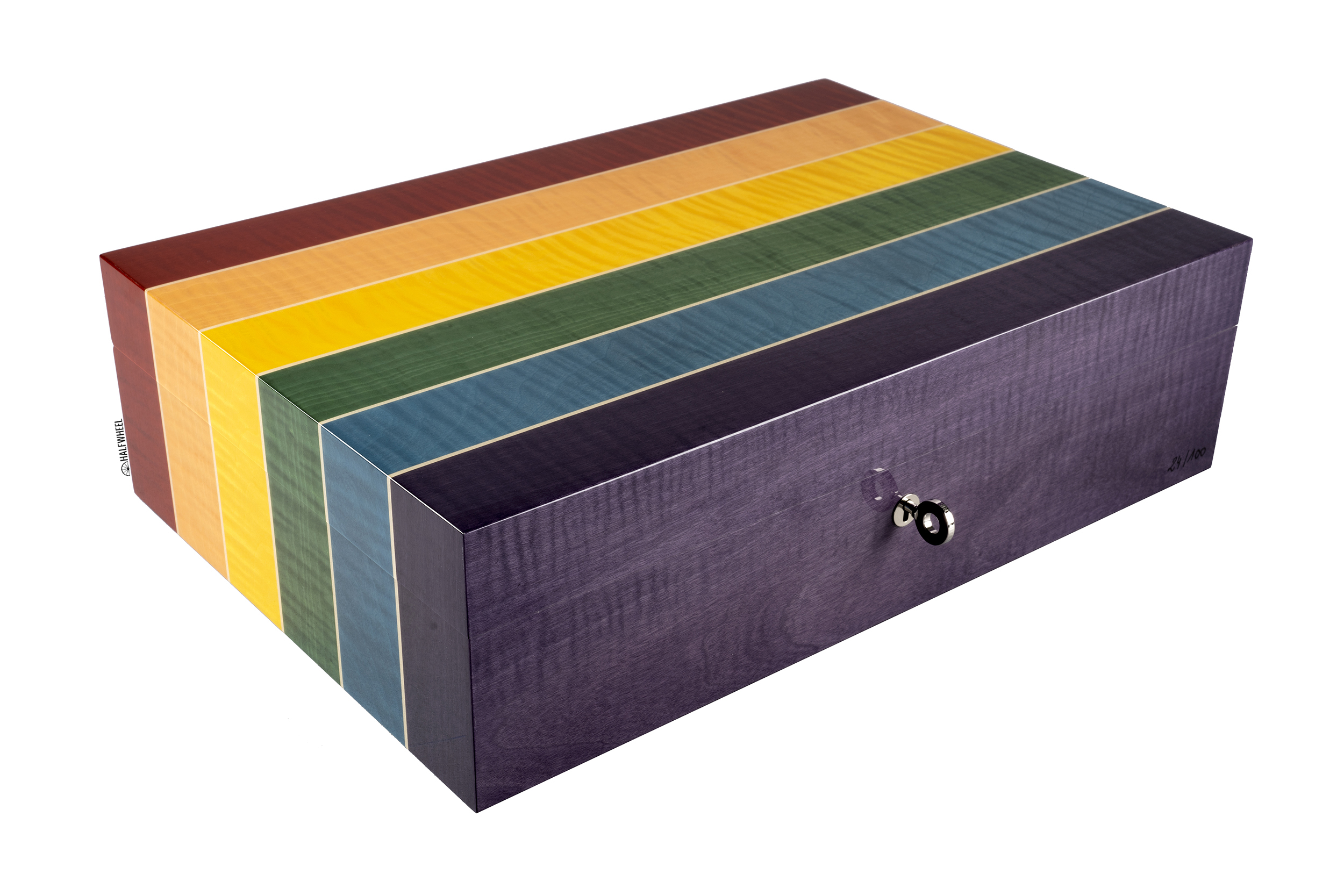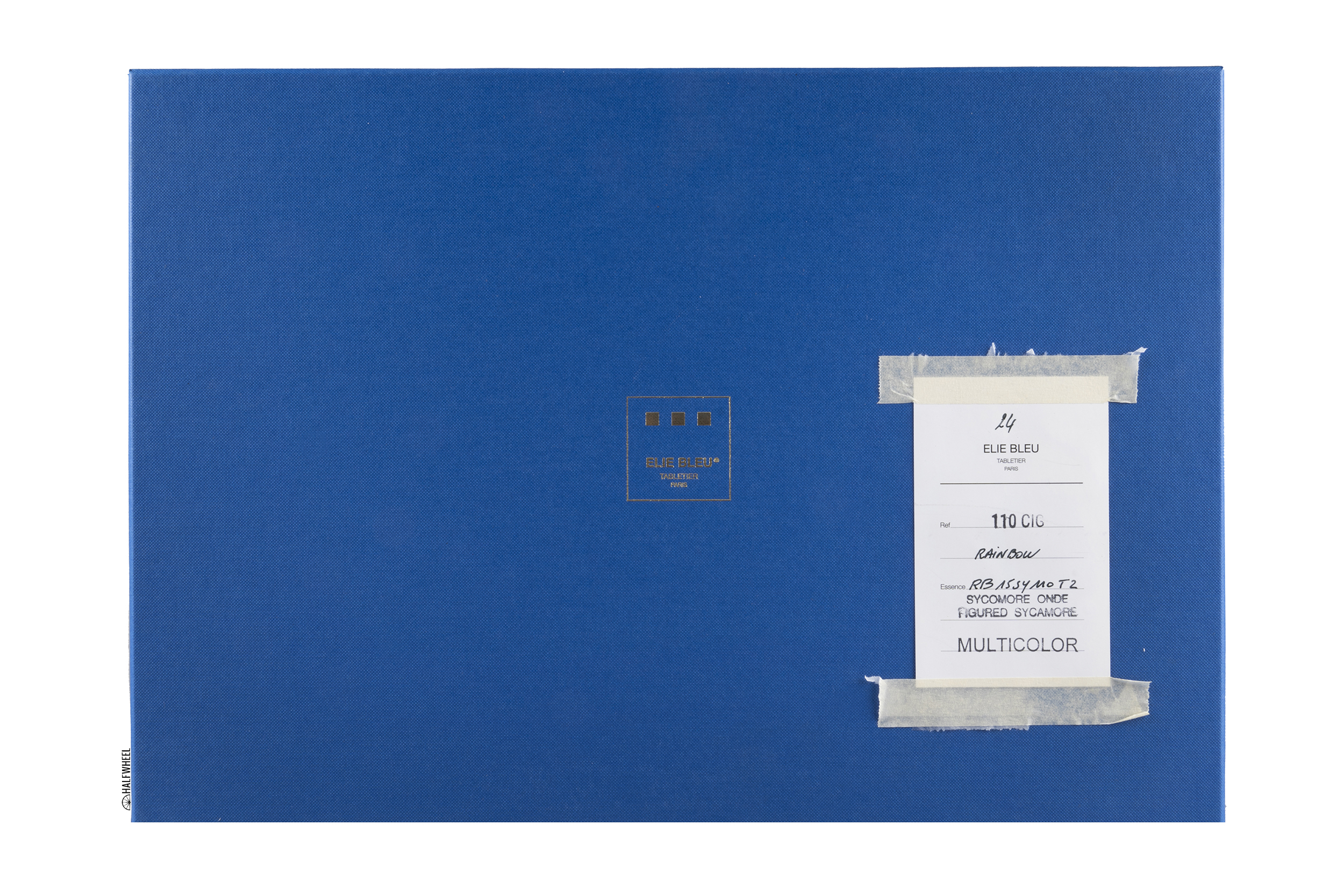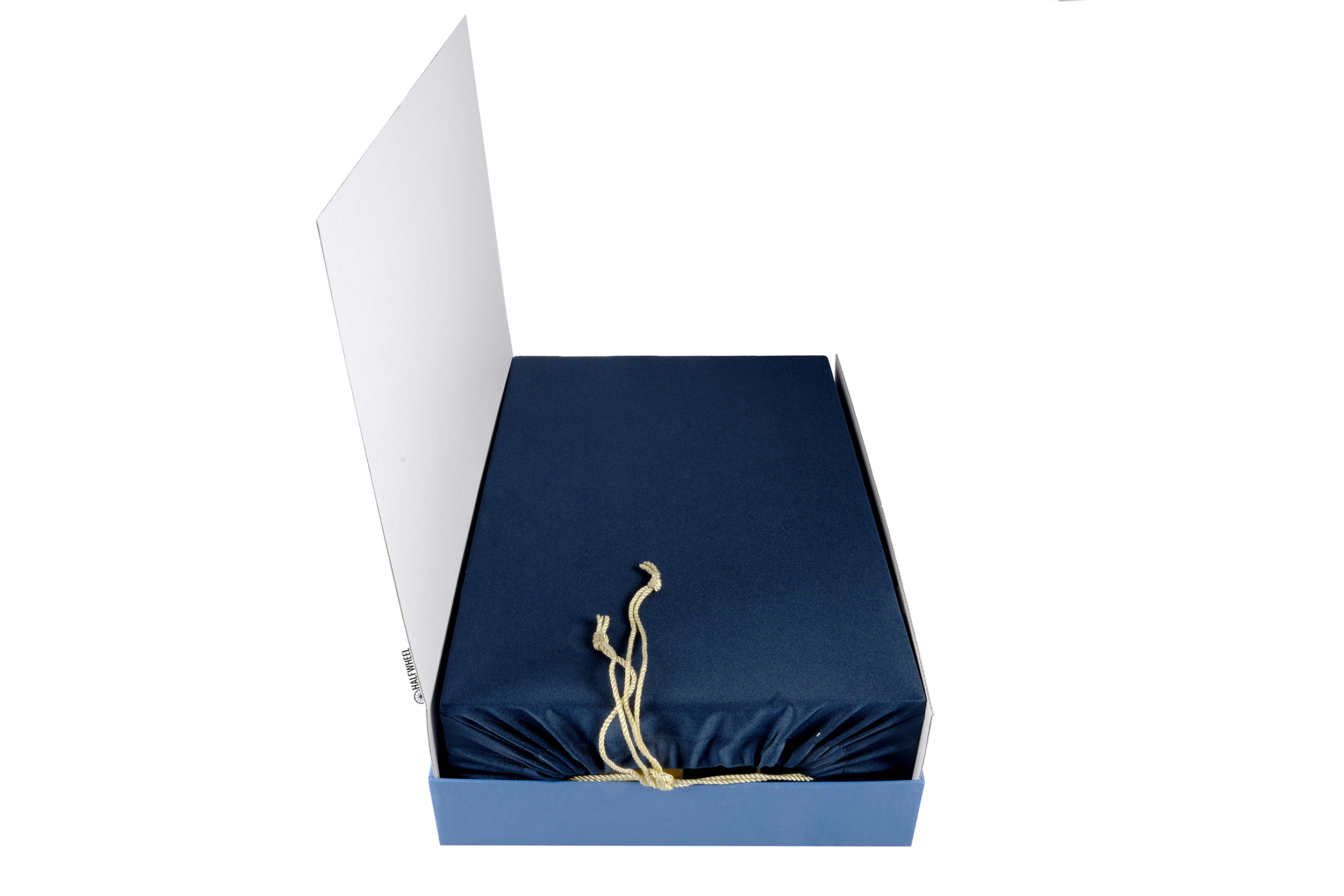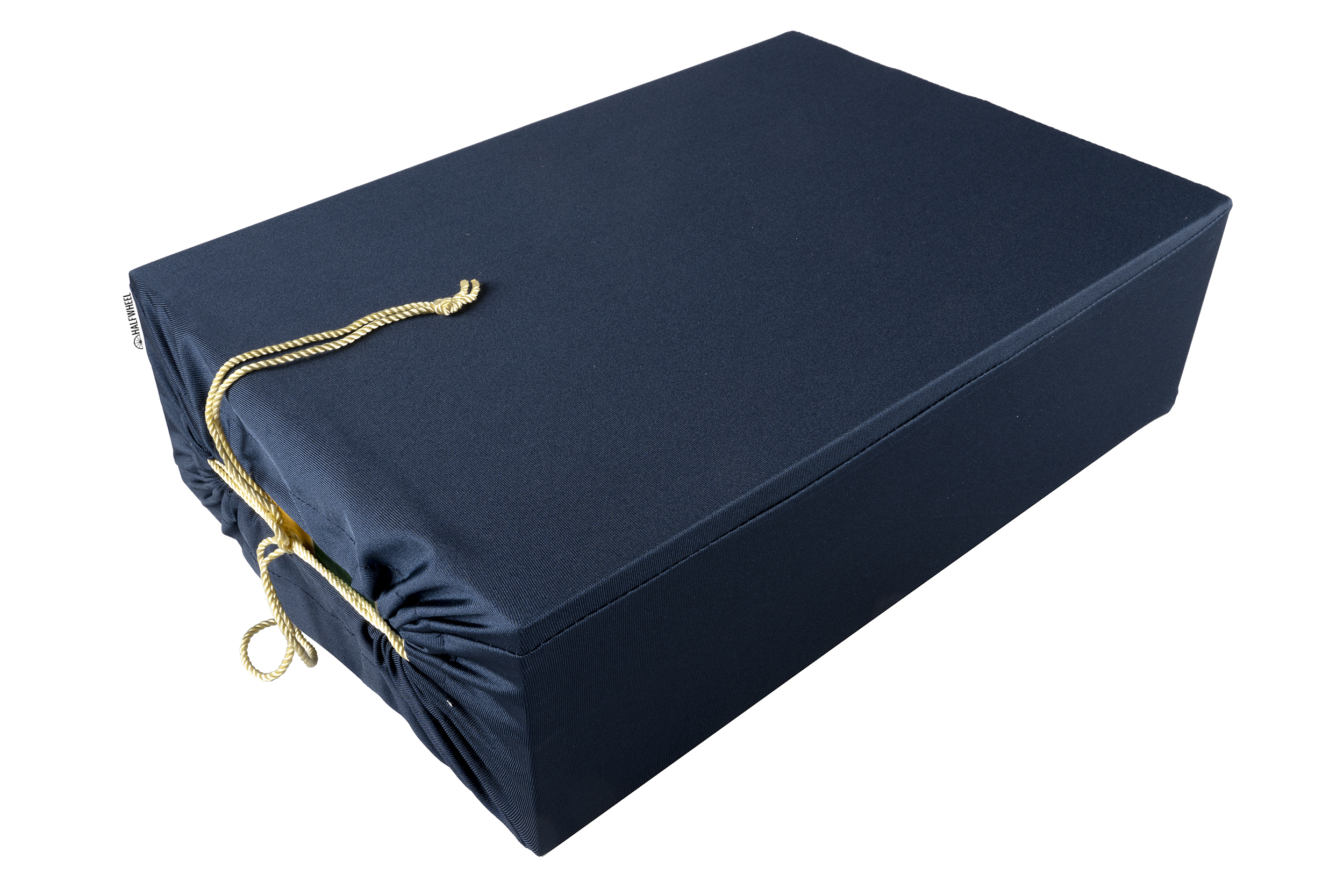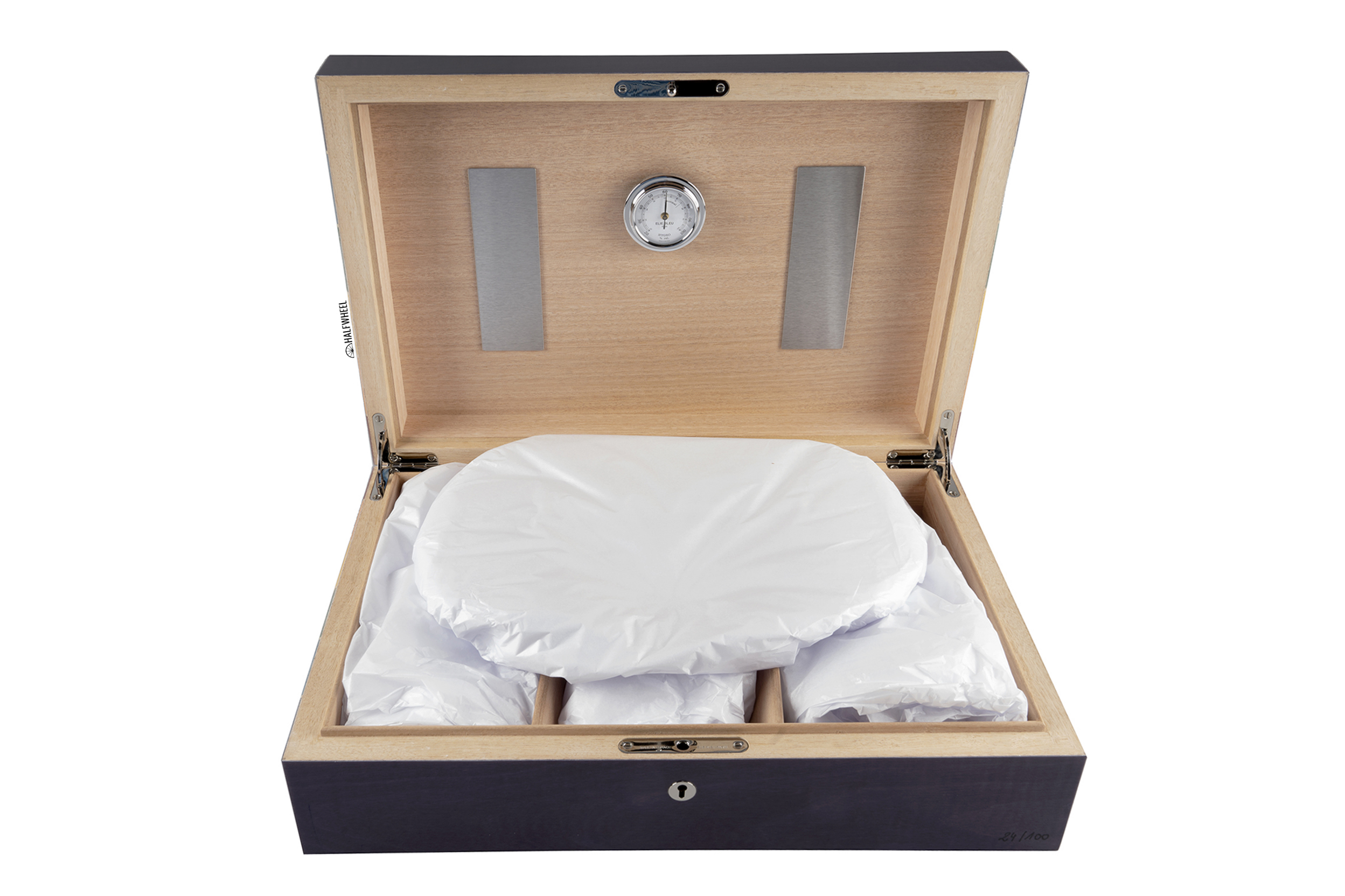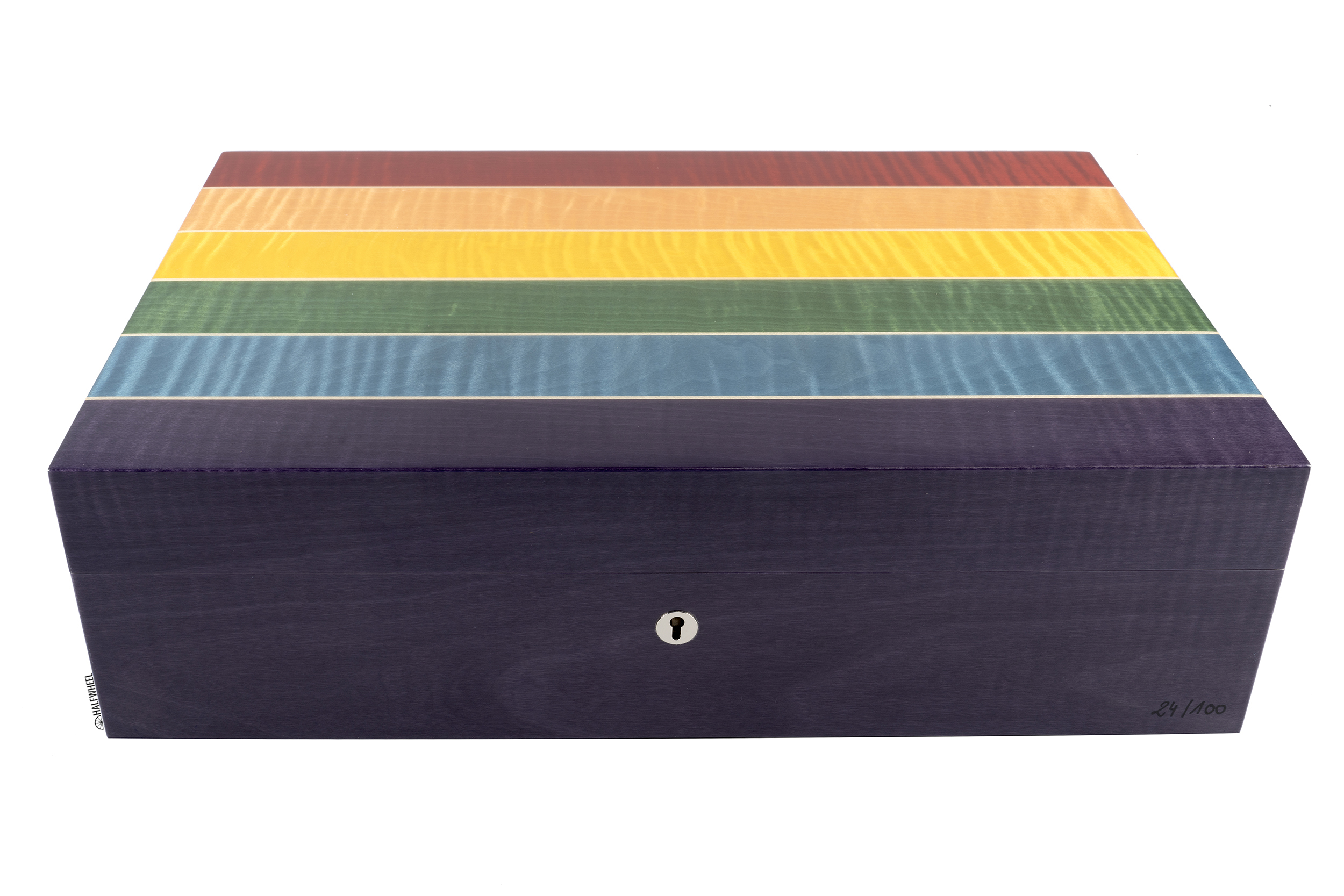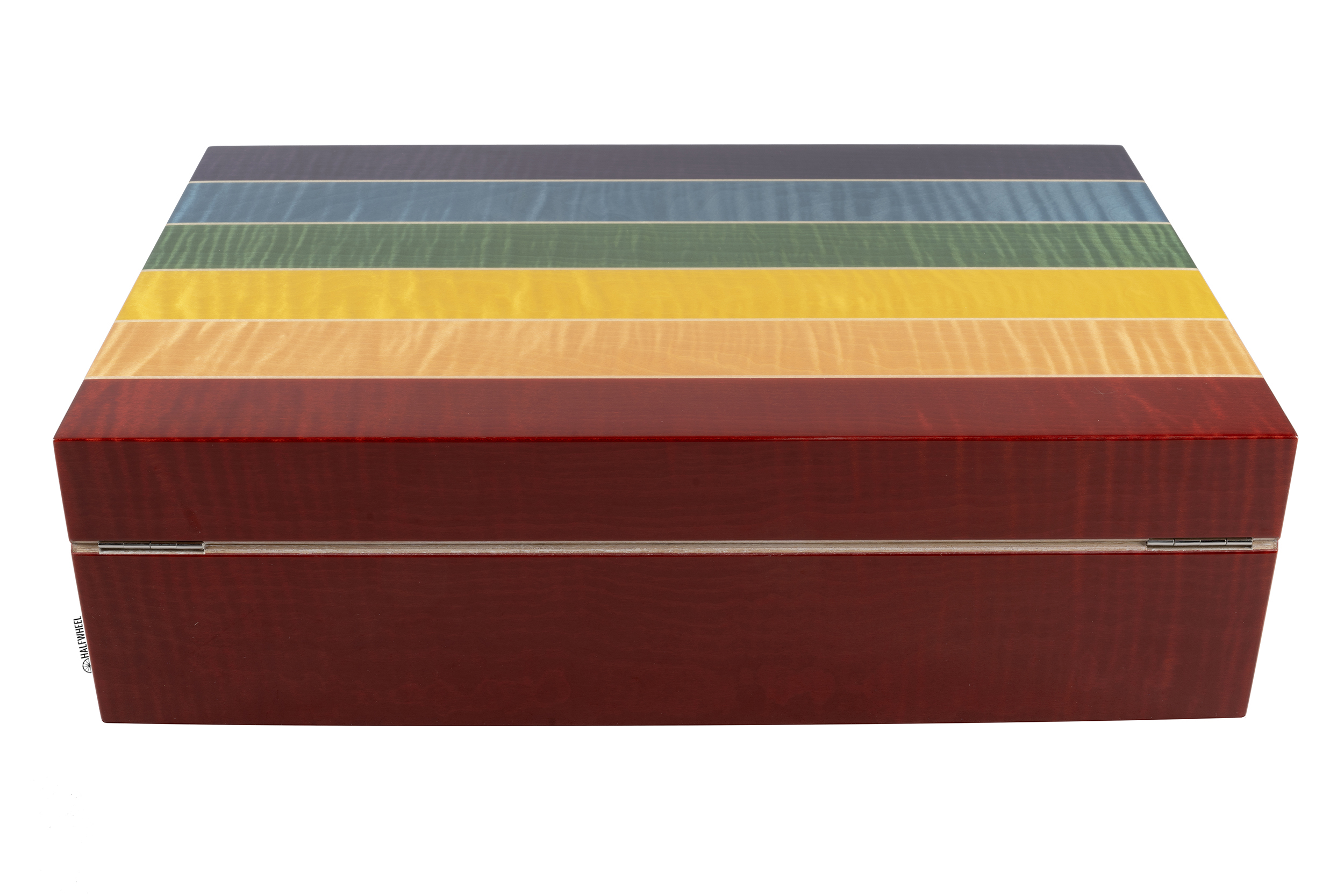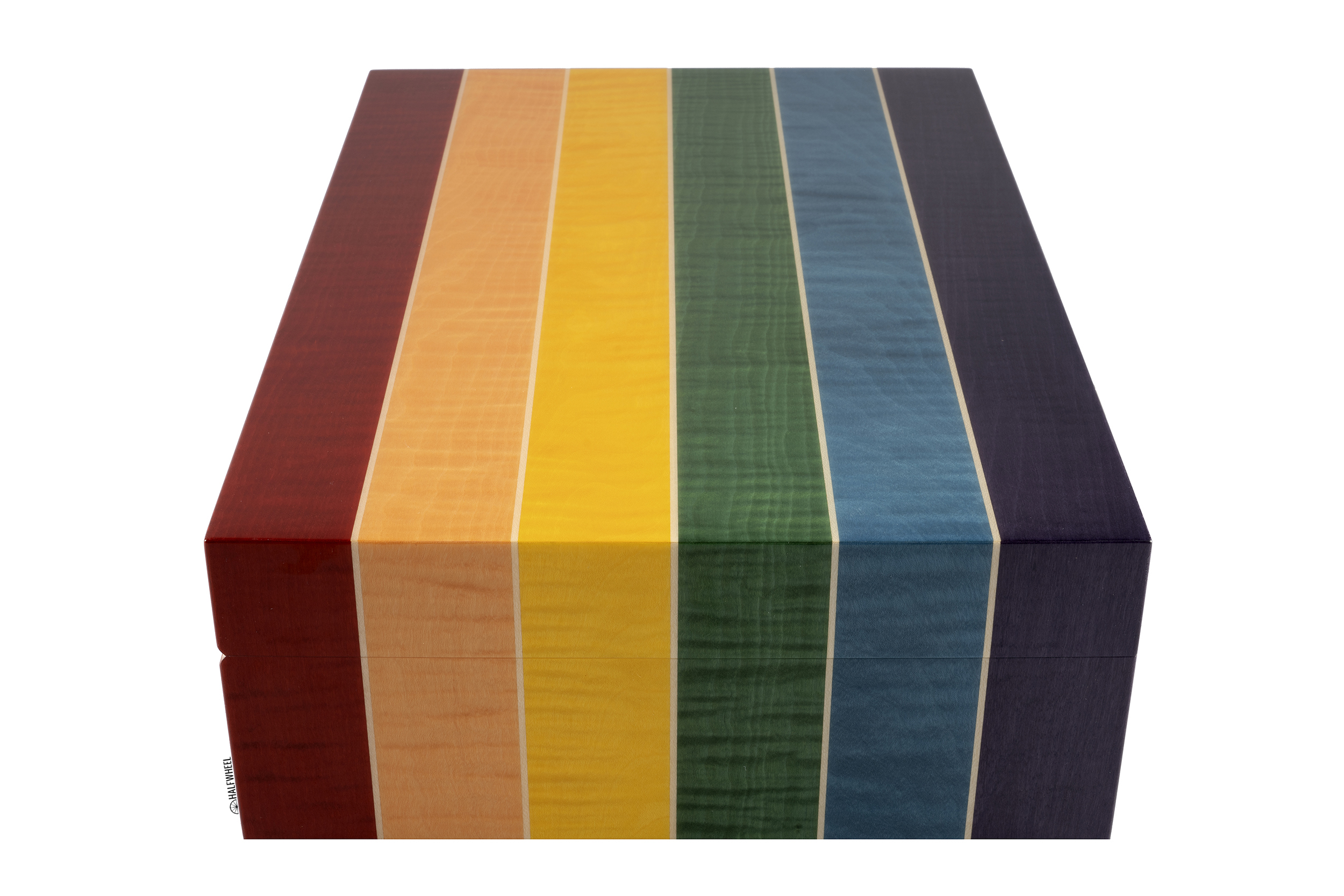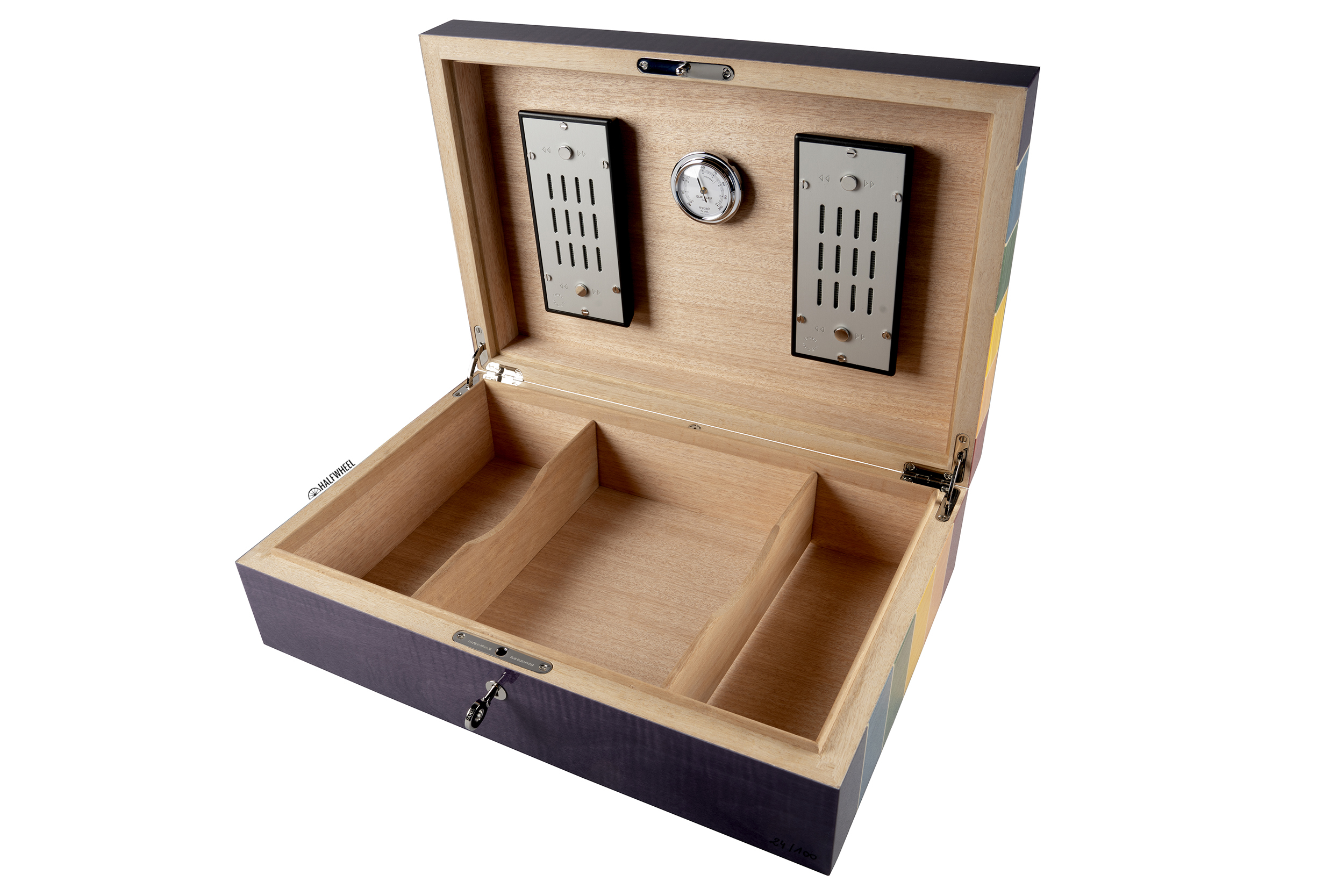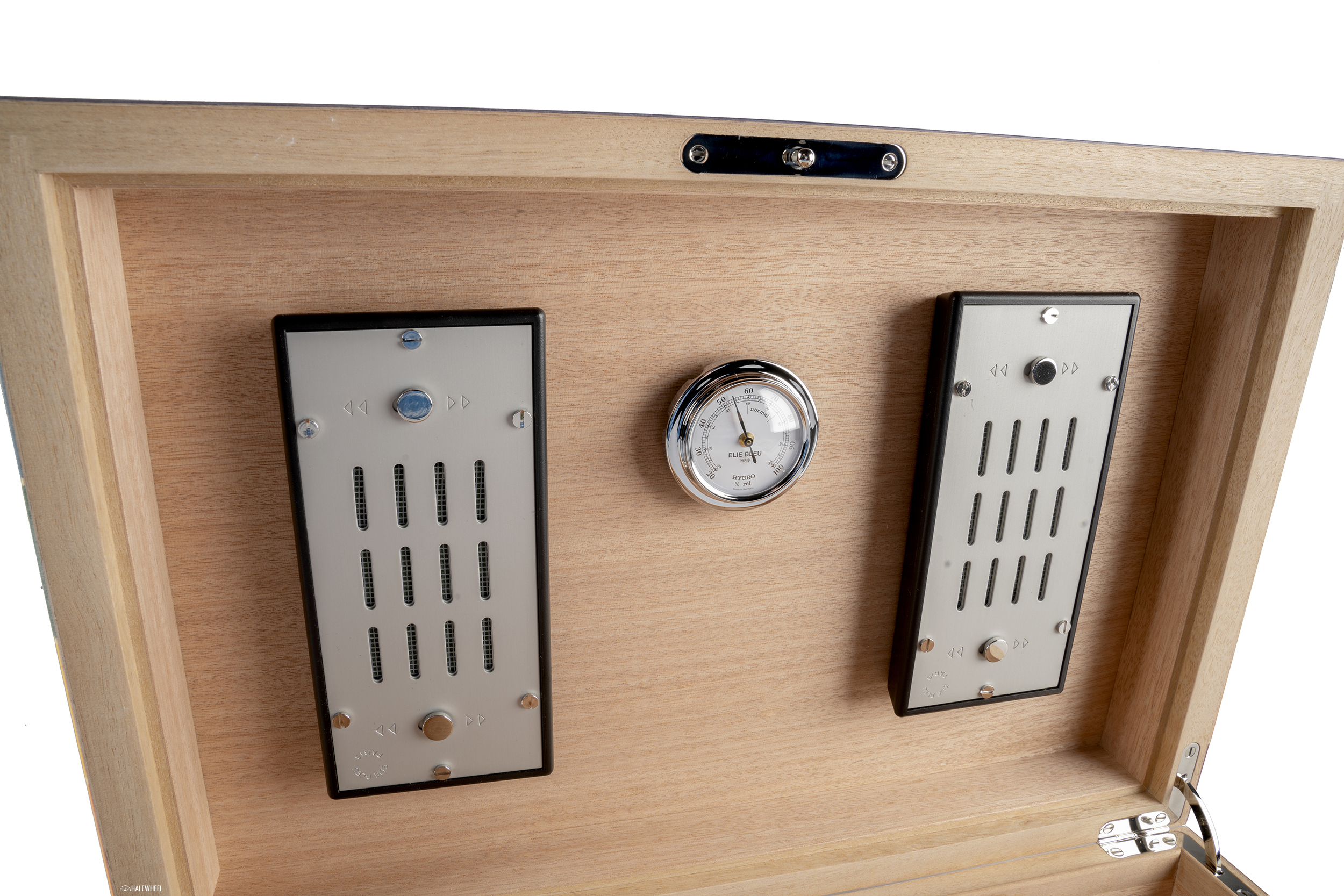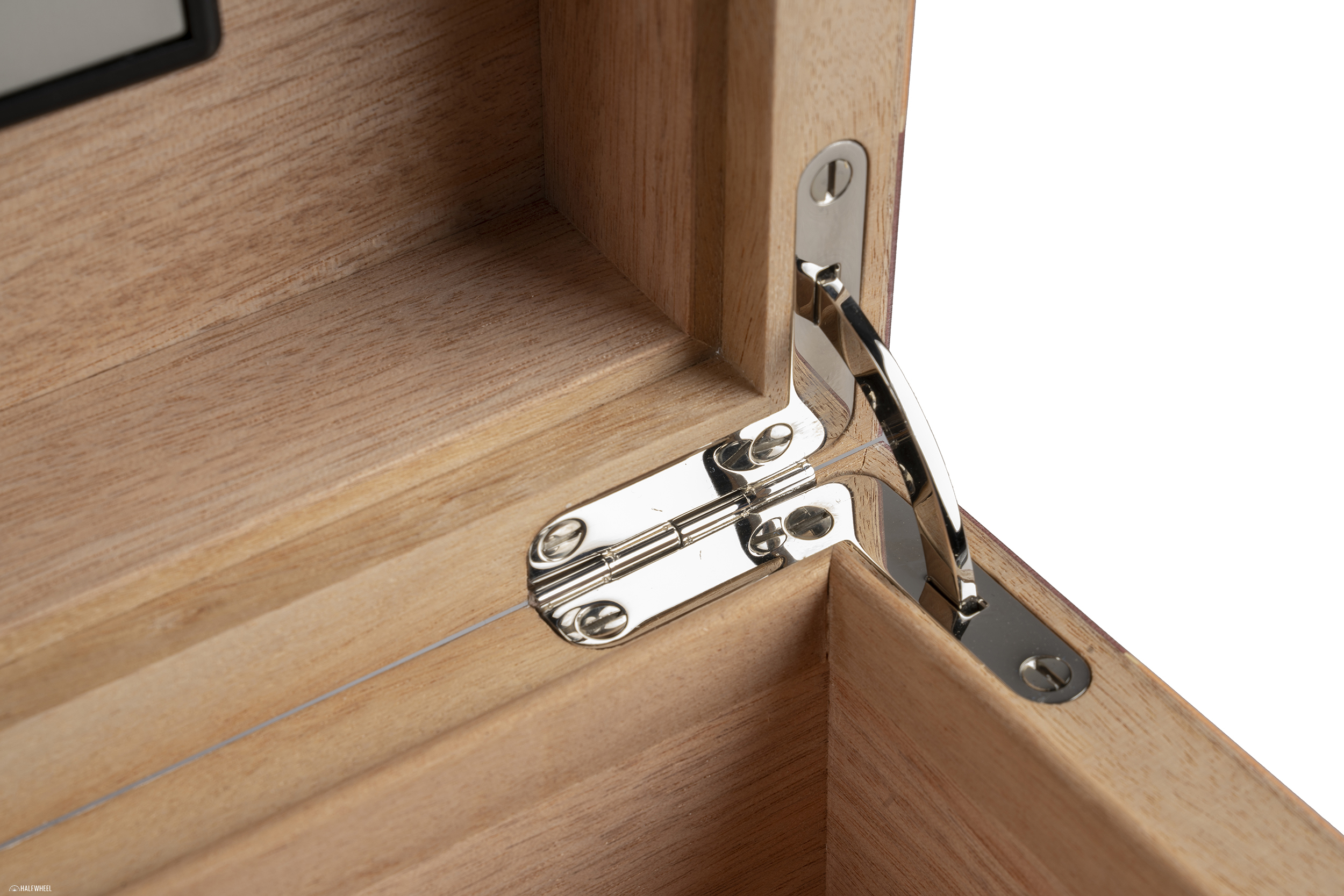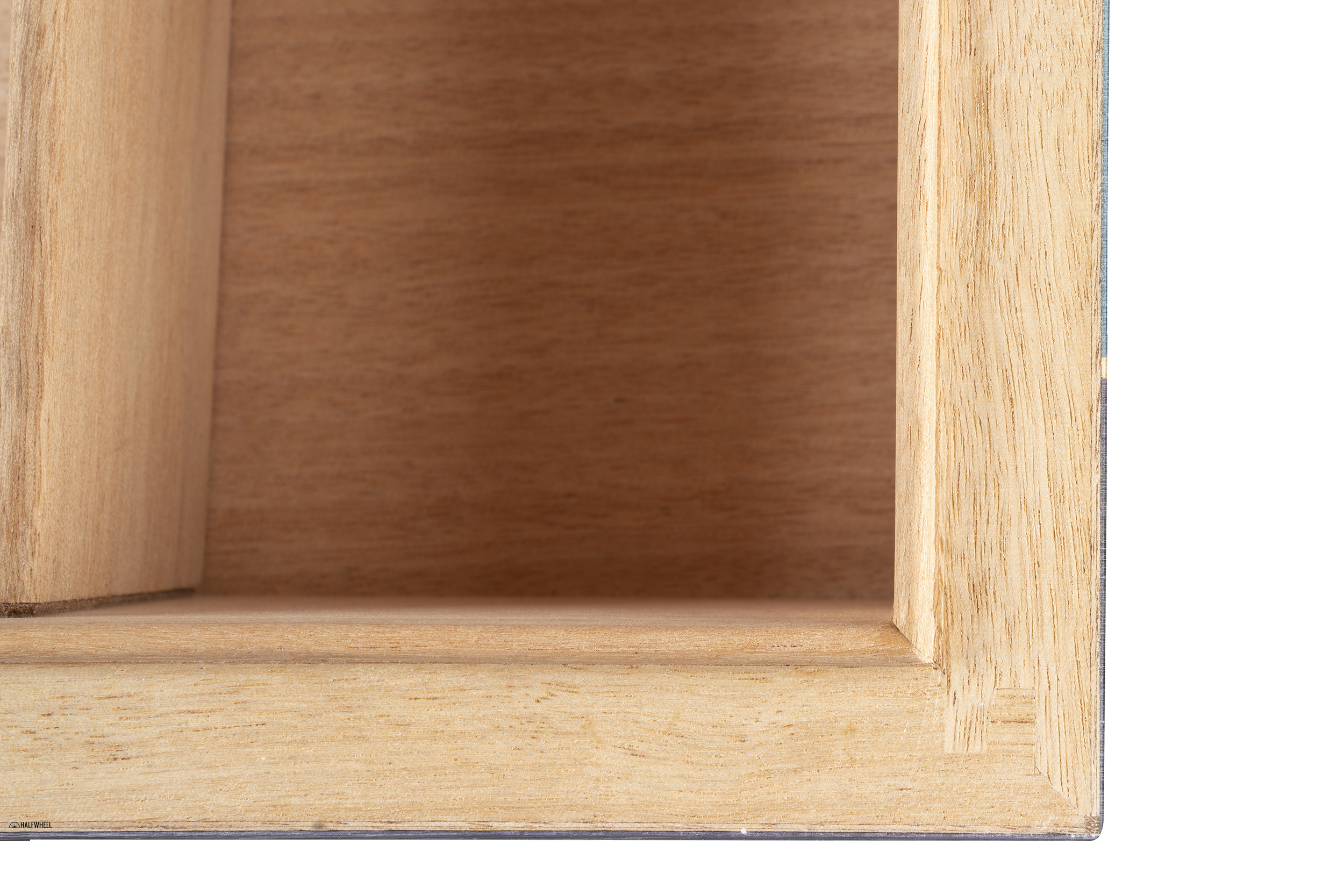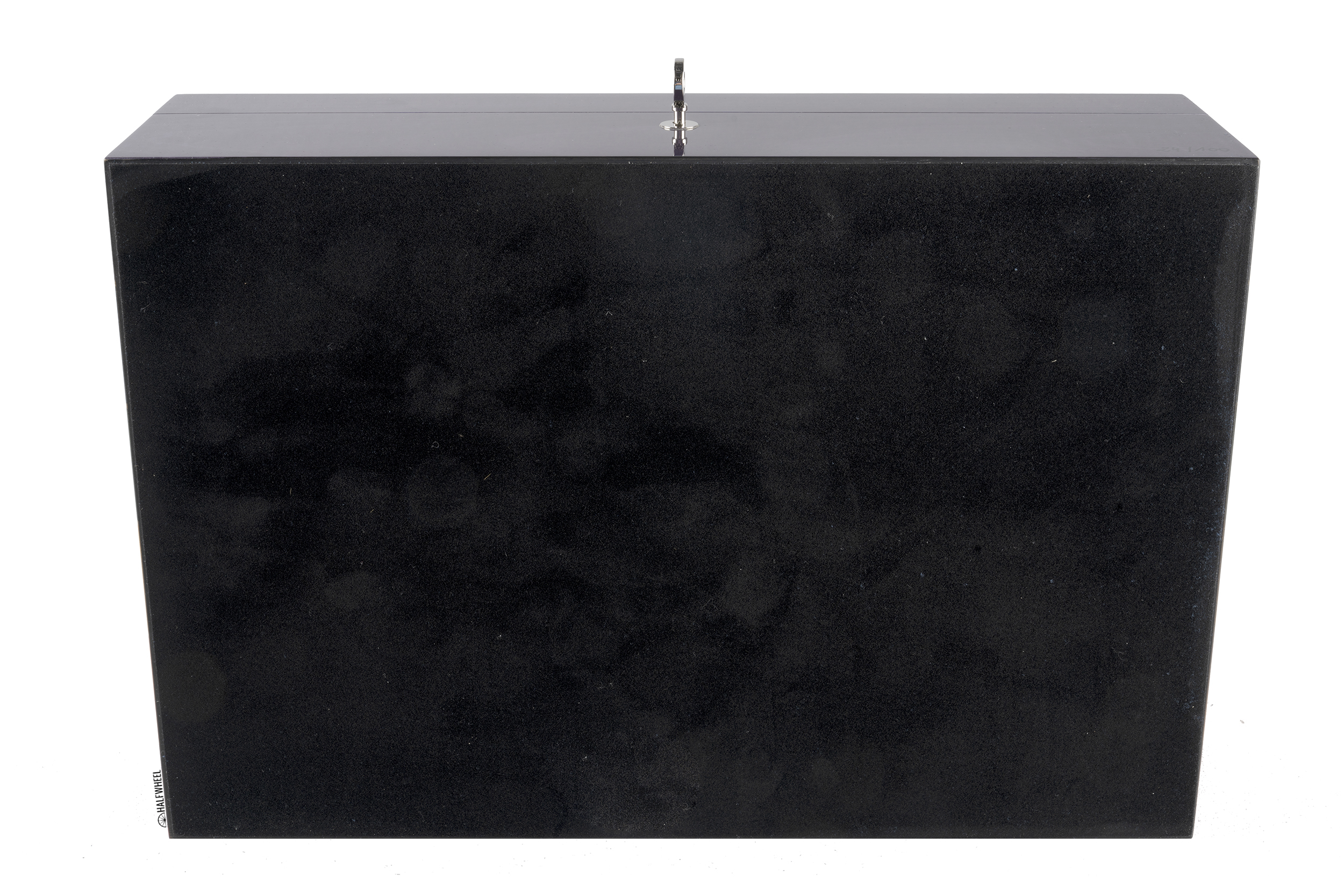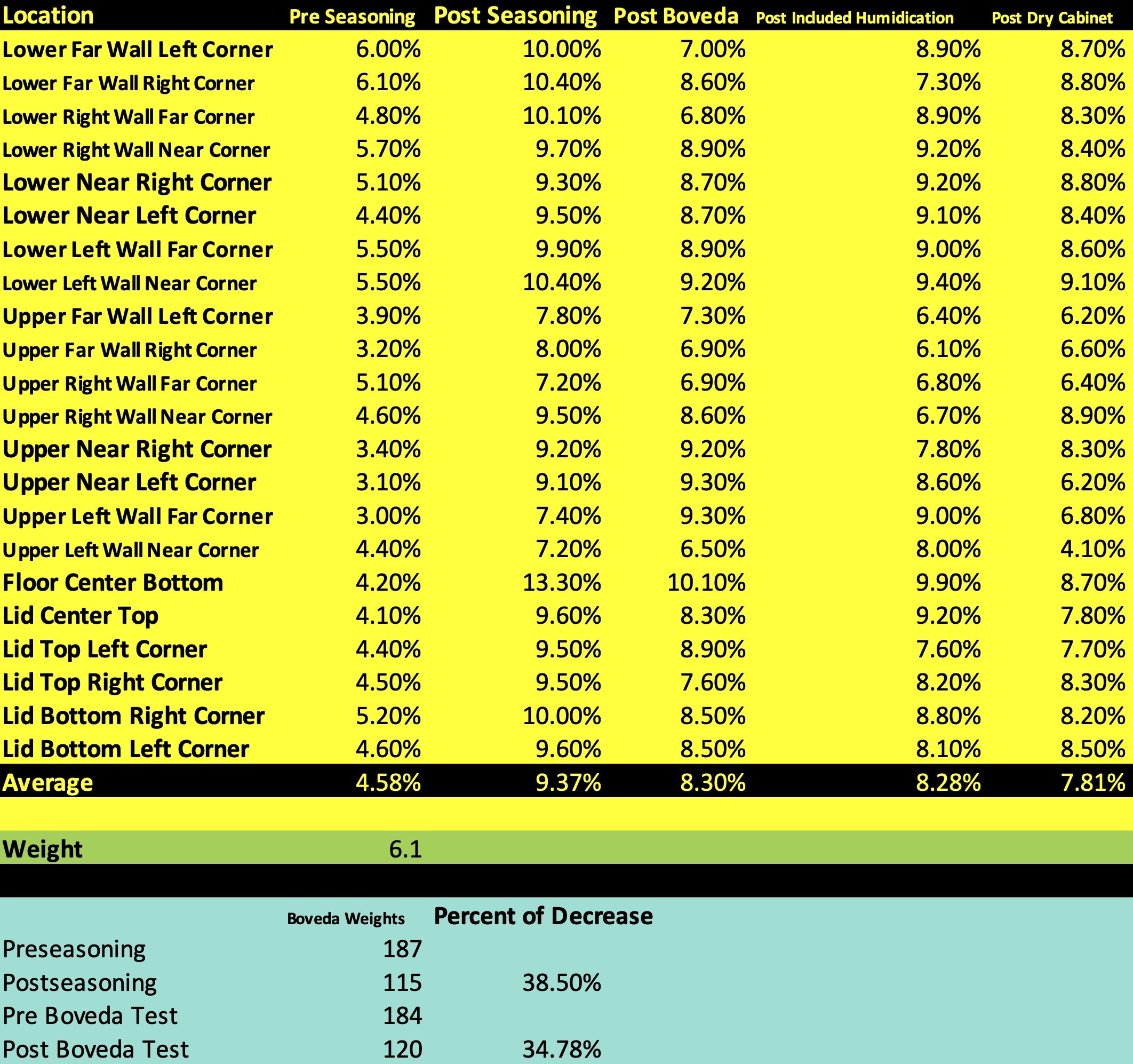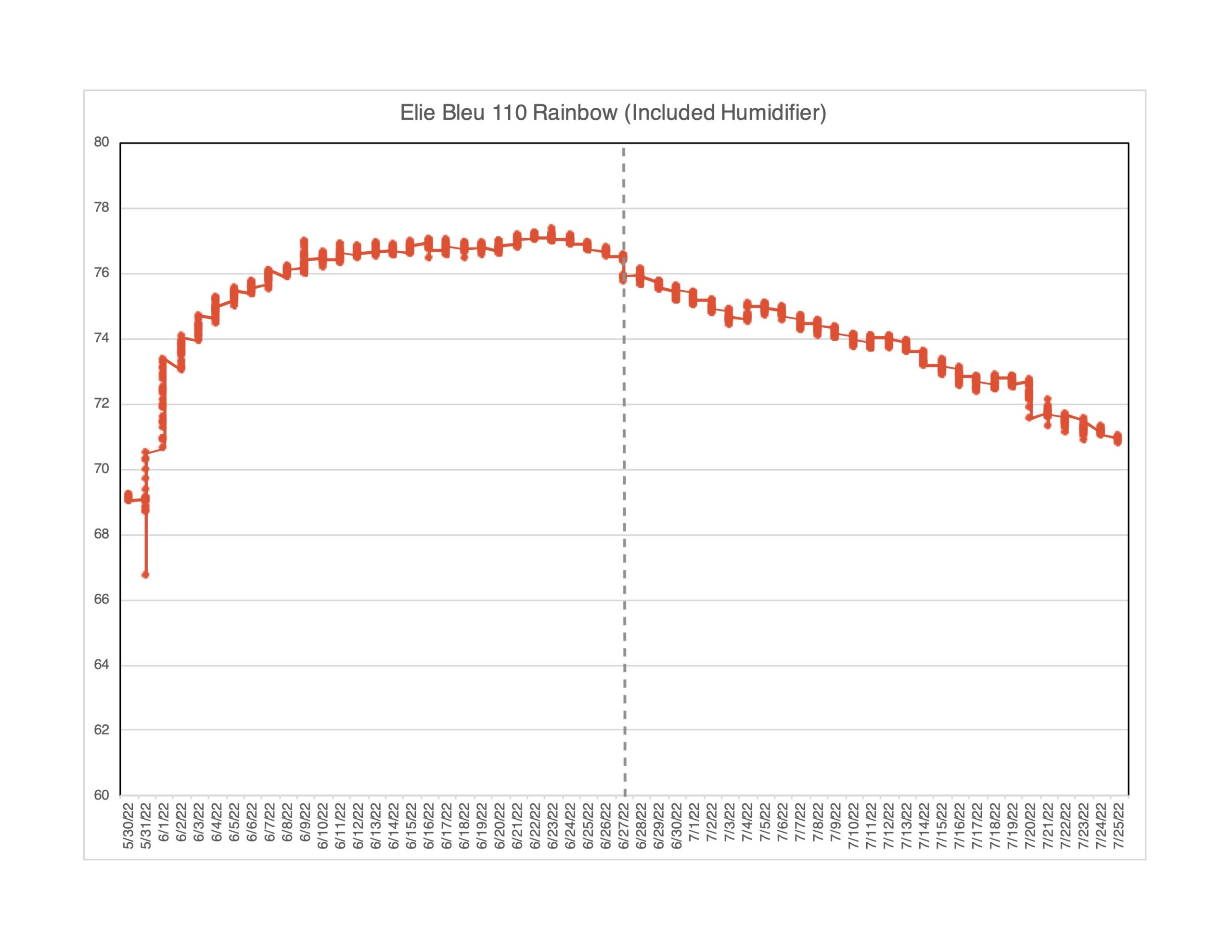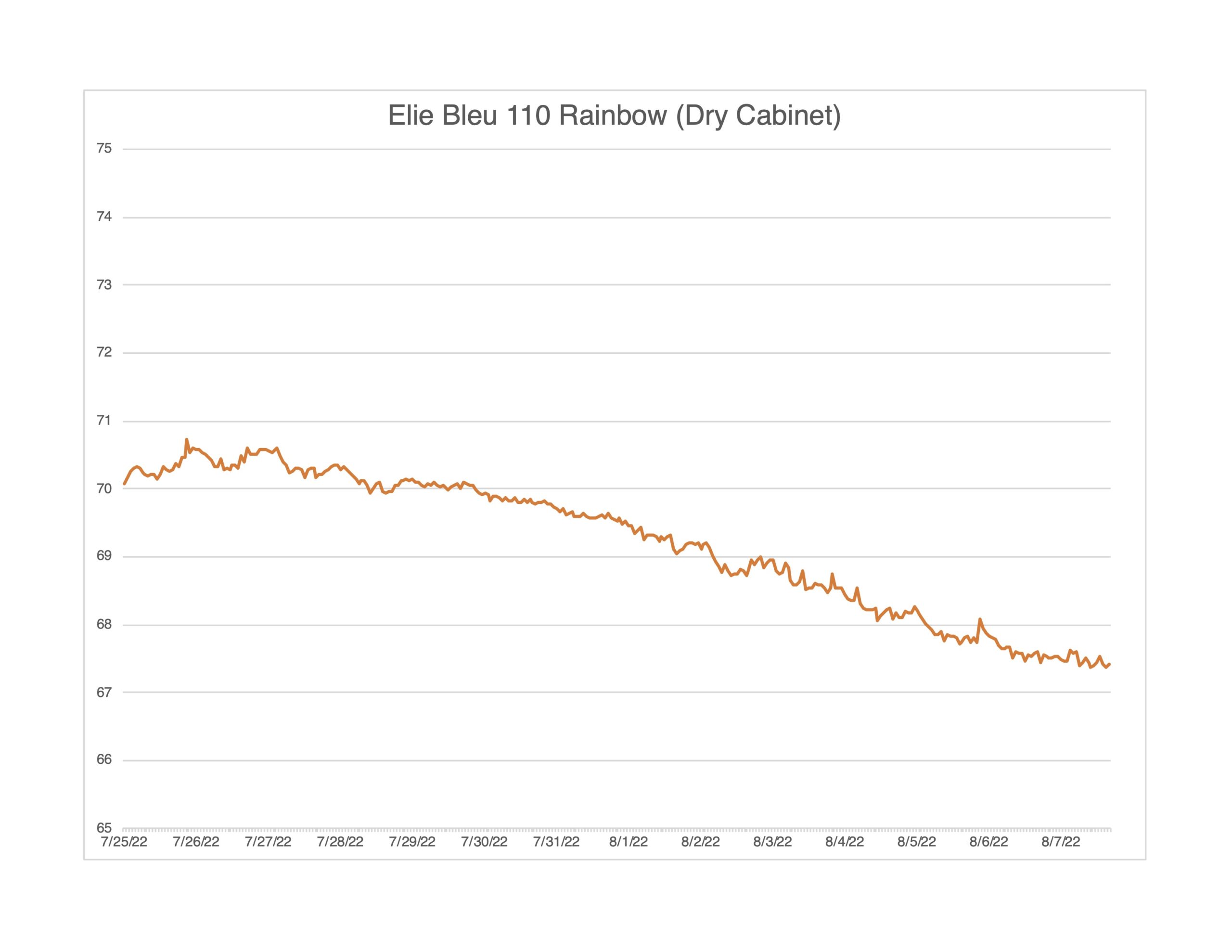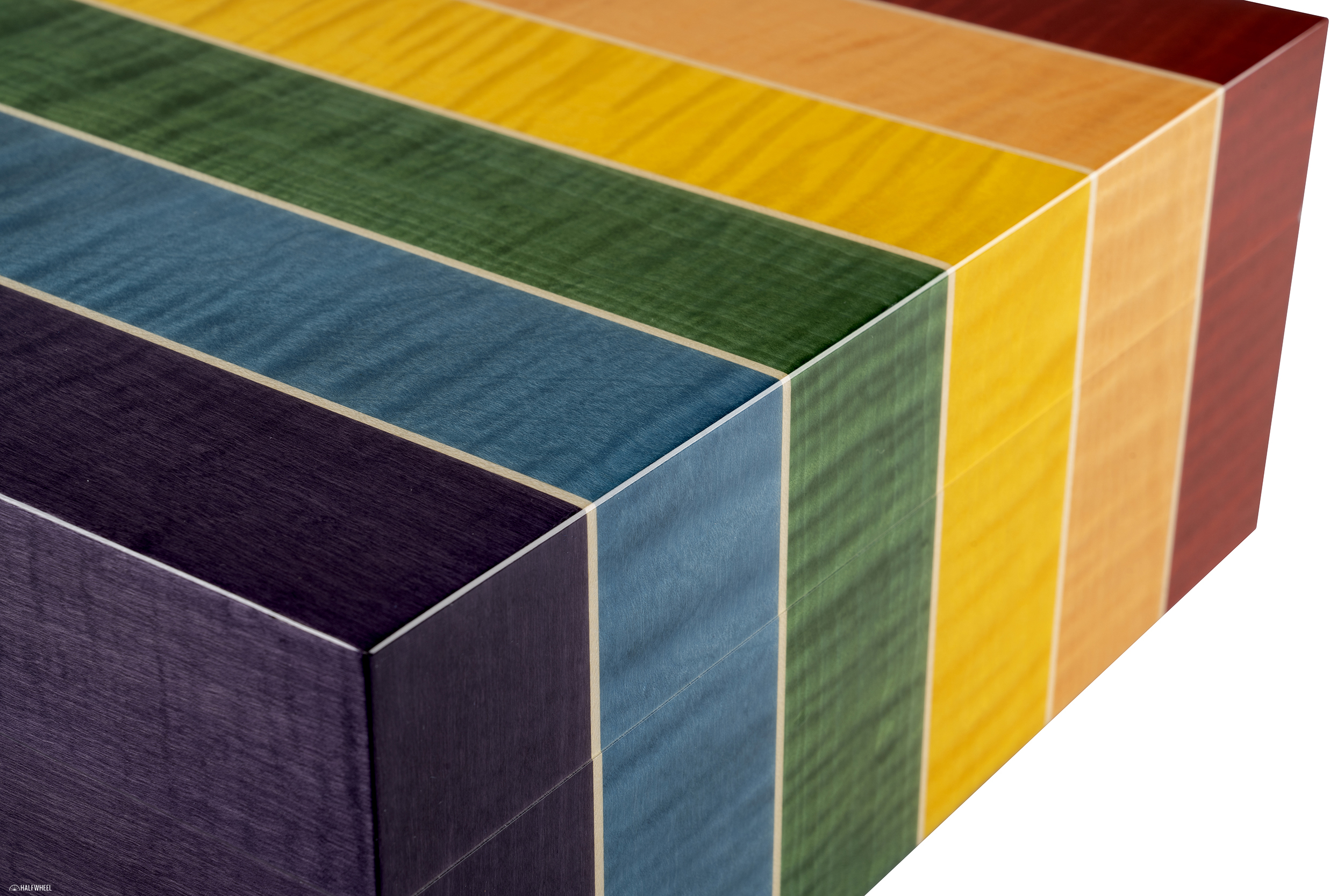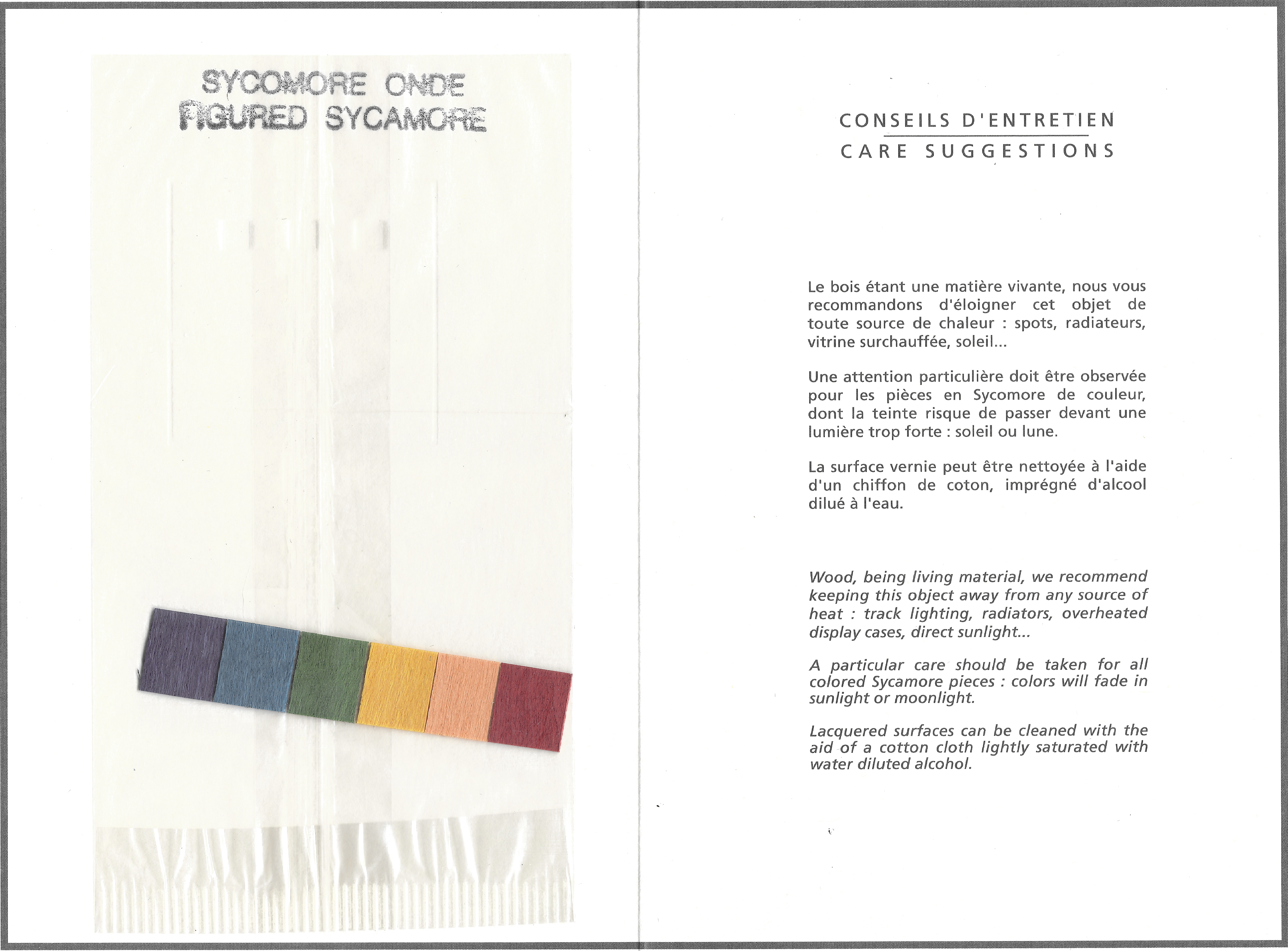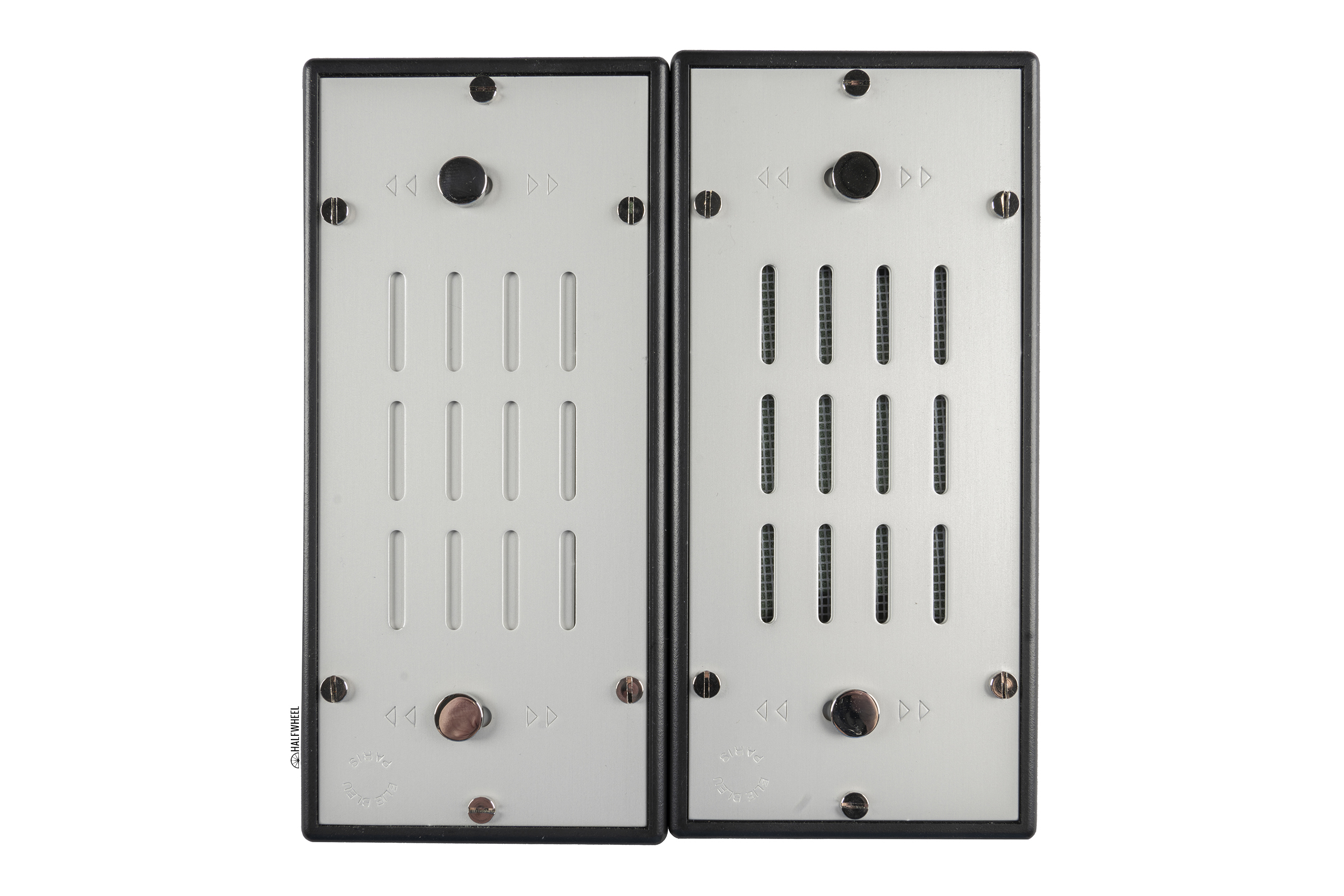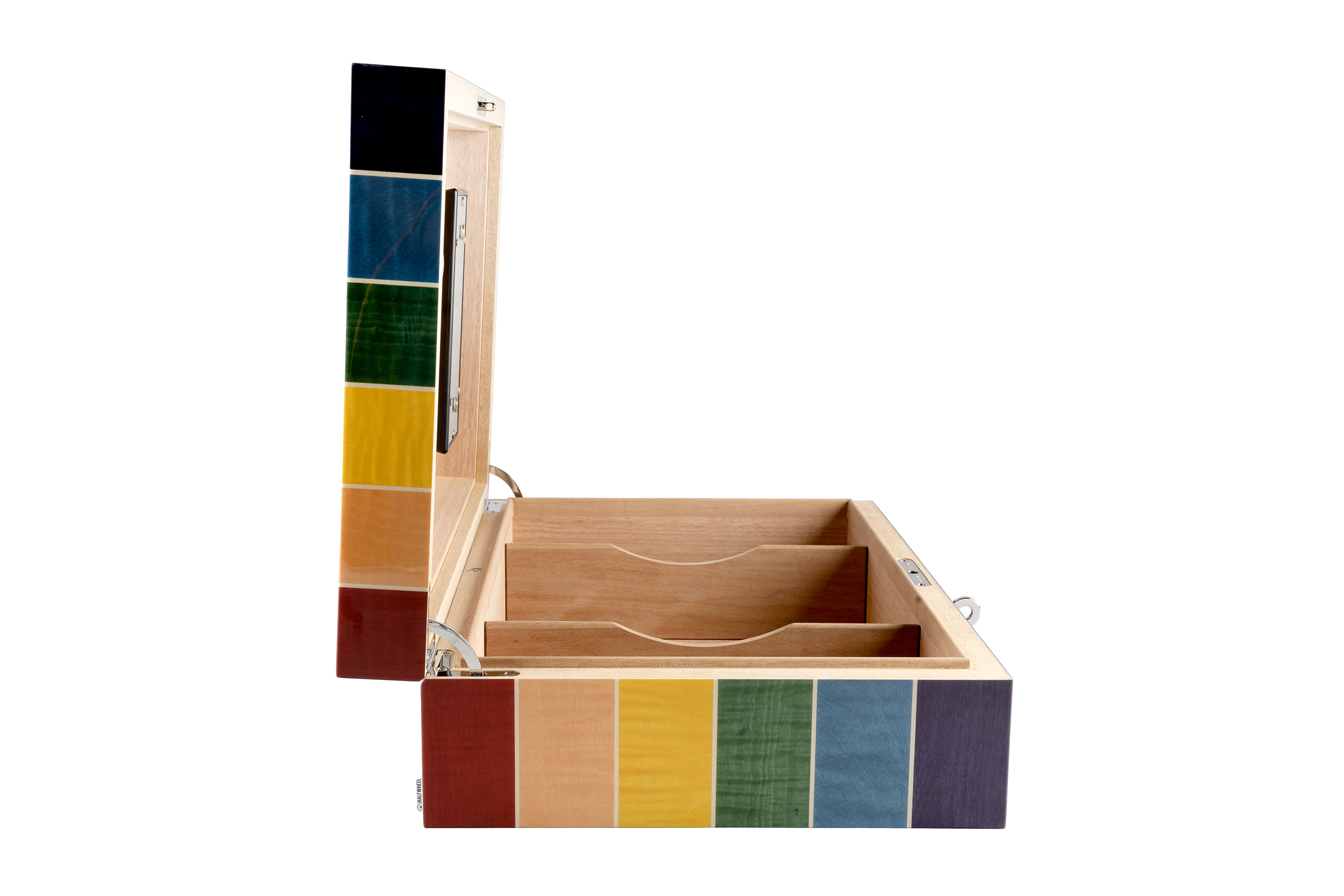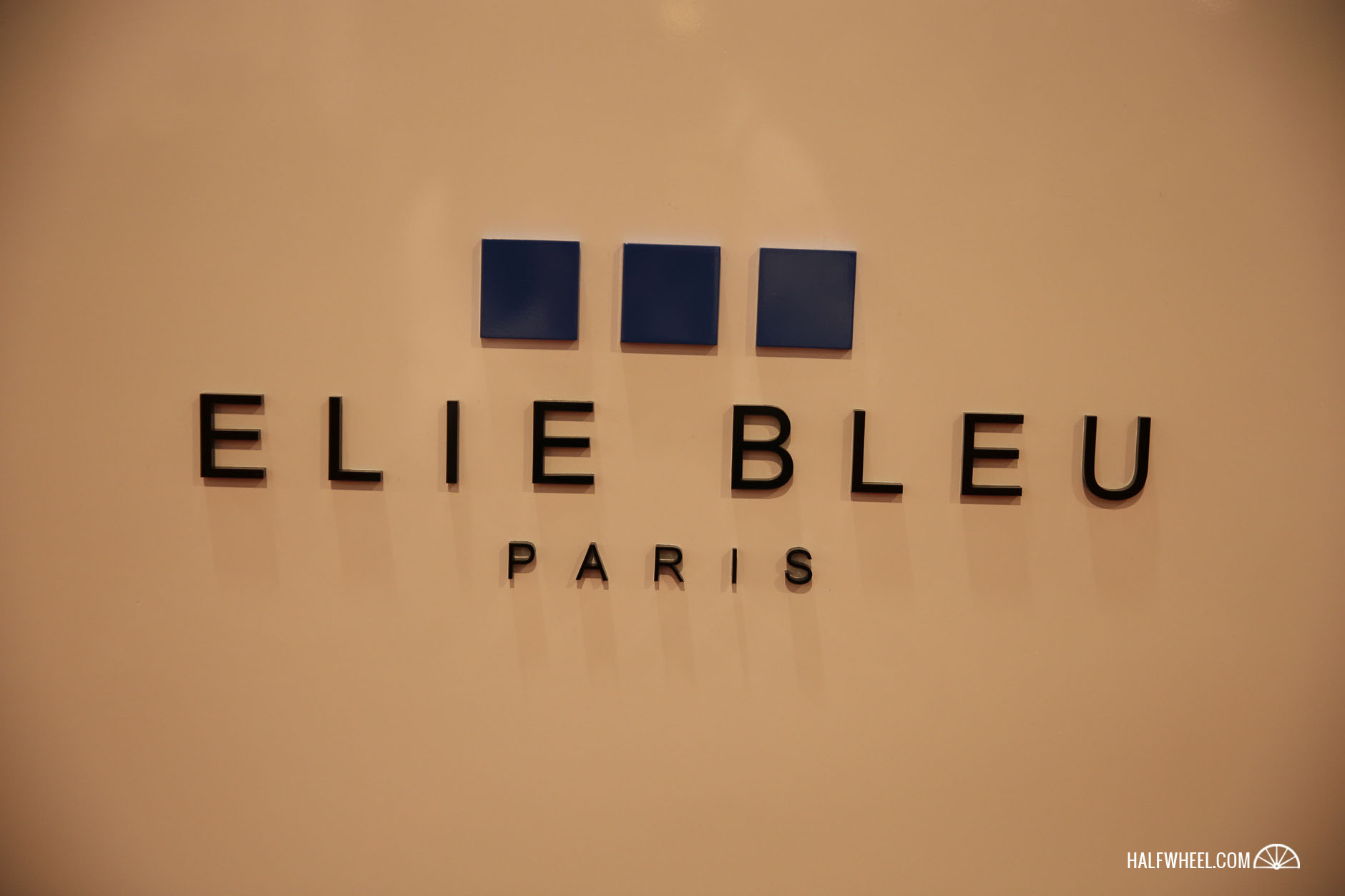“Should we call this a series?”
Brooks Whittington asked me that the other day. The truth is, at the moment, it’s probably not a series because there are only two humidors part of this not series, which makes it more of a head-to-head comparison than anything else. But the original plan was for this review to be part of a series. Last year, I did a proper series of seven humidors that were all priced around $175 to try to determine if there was a wooden humidor that I would recommend at that price point. This series was supposed to be the exact opposite: luxury humidors.
For this one, I wanted to review humidors that would more or less be the most likely options if you walked into an American cigar store and said, “what’s the most expensive humidor I can purchase.” For that, three names came to mind: Davidoff, Elie Bleu and Prometheus. Unfortunately, Davidoff hasn’t had very many humidors in stock during the last two years and Brooks Whittington vetoed my idea to review the $8,950 Davidoff Urban Architecture Humidor, so for now, it’s not a “series.”
WHAT IS IT?
Elie Bleu is a French luxury humidor maker. I think it would also be fair to say that most people who are familiar with the brand would say it’s the French luxury humidor maker. Founded in Paris more than four decades ago, Elie Bleu is the company that cigar companies call upon when they want a luxury humidor made. Altadis U.S.A., Arturo Fuente, My Father, Oliva, Habanos S.A. and even Boveda have all turned to Elie Bleu when they’ve wanted special humidors made. Elie Bleu makes the humidors in Paris and has a reputation that precedes the company’s name. It’s also a company that has spent most of its history exclusively focused on making humidors, and as such it has a very large catalog of humidor shapes, designs and materials.
As for this humidor, it’s one of the dozens of different humidor designs that the company describes as holding 110 cigars. Not all these humidors are the same dimensions, but if there was a standard size Elie Bleu humidor, I have to imagine this would be the shape, or possibly the one that’s slightly taller than this. The humidor is made of tinted sycamore woods, which are dyed to one of six colors and then used for the exterior of the humidor. Each of those strips uses a different pattern, though that strip is carried over to the sides of the humidor, and in the case of the red and purple parts, to the back or front of the humidor.
This is the second rainbow humidor design from Elie Bleu I’m aware of. The previous one featured vertical stripes, but most notably, the bottom part of the humidor was a solid color. This new design appeared in 2021 and featured horizontal stripes that extend the full length of the exterior.
HOW MUCH DOES IT COST?
$3,200 was the U.S. MSRP when we purchased the humidor in 2021.
Per Elie Bleu’s European website, this size humidor can be had for prices ranging from €1,885-6,510. Of note, those aren’t necessarily the American prices tas this humidor is currently listed at €2,634, which—in October 2022—is a lot less than $3,200.
WHAT’S INCLUDED
- The humidor
- Two removable dividers
- A non-removable analog hygrometer
- Two Elie Bleu humidifiers
- A key
- Instructions
HOW LARGE IS IT INSIDE?
I measured the interior dimensions as 14.25 inches x 9.1 x 4.125. Per Humidor Discount’s humidor calculator, the 534.9 cubic inches of volume should be enough to store 112 robustos. That said, some of that space is occupied by the removable humidifiers and non-removable hygrometer.
Exterior dimensions are 15.75 inches x 10.75 x 4.5. The humidor weighs 6.1 pounds, a lot lighter than I initially expected.
WHAT MAKES IT SPECIAL?
The wood details.
When it became more and more likely we were going to spend this much money to purchase the humidors for this series, I began thinking about which particular Elie Bleu I’d like to buy. There are so many of them and many of them I’d love to own. But once I saw this humidor in person it was a lot easier to make a decision.
The way the wood patterns align through the bottom and top parts of each of the six stripes is incredible. To me, this humidor really encapsulates what makes Elie Bleu different: the exteriors are on a different level.
halfwheel’s Humidor Testing Process (2022 Revision)
After having some issues with the previous series of humidor reviews, I made some revisions to how humidors are tested. First, I am now using two SensorPush devices per humidor to try to overcome any issues where one of the SensorPush devices fails or runs out of battery.
Second, the process that each humidor goes through has been modified.
- Boveda seasoning packs for 14 Days (Weigh before and after, use moisture meter before and after.)
- Boveda packs for 13 Weeks (Weigh before and after, measure with moisture meter after.)
- (Option Reseasoning)
- Included humidifier for Eight Weeks (Optional refill at 28 days, measure with moisture meter after.)
- (Option Reseasoning)
- Two weeks inside of the dry cabinet. (Measure with moisture meter after.)
During each of these steps—with the exception of the optional refill during the included humidifier part—the humidors are closed. The only times a humidor is opened are when I’m moving from one step to another and need to switch out the humidification elements and use the moisture meter. In addition, the humidors are pretty much empty during these tests. Inside there are the two SensorPush devices, the humidification element(s) and the included dividers and/or trays, but no cigars or anything else.
I finally got Boveda to give me a more precise way to determine how many Boveda packs each humidor should receive. In short, I’m told that for every 200 cubic inches of volume, you should use one 60-gram pack, and to round up to the nearest 200 cubic inches. For this humidor, I am using three packs for both the seasoning and testing processes.
The results of some of this testing are above. For this humidor, there was only one seasoning process and no reseasoning was required.
SEASONING
No issues here. The Elie Bleu showed clear signs, both with the SensorPush and the moisture meter, of needing seasoning. While it never cleared the 75 percent mark, I felt pretty good about the seasoning process when it finished given the consistent 70+ percent RH and the fact that the average moisture meter reading more than doubled after the two-week seasoning process.
BOVEDA
This isn’t the full Boveda testing period, but I wanted to be able to show how impressive this was in visual form and expanding it made that more difficult. What you see above is 30 days of hourly data points from the Sensor Push device, meaning each day has 24 dots aligned vertically. Lots of time the dots appear more than once per day, so that’s why you can’t see 24 of them for each day.
The performance from the Elie Bleu and three Boveda packs is bonkers. I’m not sure how to fully encapsulate how impressed I am with these results.
On May 24, the widest single-day range occurs, it’s 1 percent relative humidity. In a sealed environment and with moderately advanced testing equipment, I’ve noticed that Boveda packs themselves tend to operate like a wave if you zoom in enough on the y-axis like is done here. In a single 24-hour period, the Elie Bleu is oftentimes performing better than I find Bovedas to perform in a sealed environment, though it’s not as good on a day-to-day basis. Still, that not as good on a day-to-day basis comment is indicative of a 1.3 relative humidity range over the course of 720 measurements taking over a 30-day span.
INCLUDED HUMIDIFIER
Elie Bleu’s included humidifier—which the company will sell you for €134 ($132)—feels nicer than a standard humidifier, but in actuality it uses florists’ foam. The one difference is that it has sliding covers which you can use to try to control the amount of humidity. Open the louvres to add more humidity, close them to reduce the amount of humidity being added.
Here’s my basic explanation of florists’ foam:
Florists’ foam is the traditional humidification method, it’s a green-colored foam that can also be used to keep plants hydrated, hence the name. Humidor manufacturers will place them inside of plastic or metal containers and then recommend you use some sort of combination of distilled water and propylene glycol. The use of propylene glycol—usually recommended in a 50/50 mixture with distilled water—is that it can help to reduce mold and, in theory, absorb excess humidity, specifically excess humidity over 70 percent relative humidity.
Over the years, I haven’t found this to be particularly effective and there seems to be some evidence that more propylene glycol is needed to maintain 70 percent relative humidity at 70 degrees Fahrenheit. For this testing, I used the regularly recommended 50/50 method.
Of note, Elie Bleu doesn’t call for that 50/50 mixture, instead, these are the instructions listed on the company’s website:
- Remove the Humidifiers from the Cabinet.
- Open the grid by sliding the buttons.
- Fill the Humidifiers with distilled water.
- Turn the Humidifiers upside down until the excess water has completely run off.
- Once they have stopped leaking, place them in the open position in the Case.
- Close the box and let it work.
That’s what I did and the results were predictable: too much humidity. At the halfway mark of the eight-week test (where the vertical bar is on the chart), I checked the weights of the humidifiers and found it to be sufficient and given that the humidity had been in the 74-77 percent relative humidity range, I opted not to refill and closed the vents almost completely. That helped, but given the humidor remained closed for the next four weeks, the humidity levels remained higher than I’d like.
DRY CABINET
This was as impressive as I’ve ever seen a humidor perform in the dry cabinet. I’m still not entirely sure how useful this data is, but the Elie Bleu humidor certainly passed the test.
The Good
- Raw Performance Is Excellent — The box itself does an incredible job of keeping humidity inside. The idea that a wooden humidor could actually perform this well is still somewhat difficult to believe, and I’ve seen the evidence. The results with the Boveda packs are better than what I thought a wooden humidor could do.
- The Designs are Extensive — Elie Bleu might make more different designs of humidors than any company outside of Quality Importers Trading Co., a company focused on making accessories for the masses. By my count, this particular humidor size is offered in 65 other designs according to the Elie Bleu website. Those designs include a half dozen too many Che Guevara humidors, one for each of the Zodiac symbols, classic wood designs, carbon fiber and something that looks like what a Pirates of the Caribbean Collector’s Edition Blu-Ray set could be packaged in.
- Top Level Fit & Finish — Both the fit and the finish are on a different level than most humidors. You can spend $800 and purchase a very good humidor that will work very well, but there will be little scratches here and there or maybe something that isn’t aligned flush. That’s not the case with the Elie Bleu humidors I’ve seen. This humidor is more or less flawless to the naked eye. Even under our strong studio lights, I couldn’t find any blemishes. After getting out a flashlight, I eventually discovered one: this quarter-inch scratch on the front panel. Here’s the thing though, I can’t see the scratch without the flashlight.
- It Comes With Thoughtful Instructions — I really liked this one card that included the wood samples and some instructions. This is what you’d expect from a luxury product.
The Bad
- The Florists’ Foam Humidifiers Pt. 1 — Like every other florists’ foam humidifier I’ve ever used, it doesn’t work all that well. The louvres on the humidifier are fixing a symptom, not the problem. There’s no reason why a $3,000 humidor should come with florists’ foam at this point. None.
- The Florists’ Foam Humidifiers Pt. 2 — While the humidifiers are removable, the magnets that they attach to it do not appear to be. This means if you aren’t going to use the humidifiers, you are going to see two stainless steel strips instead of the wood finish. That said, the humidifiers can be opened via a flathead screwdriver and you could replace the florists’ foam with super absorbent polymers or Boveda packs.
- The Florists’ Foam Humidifiers Pt. 3 — Elie Bleu charges €134 to purchase another one of these. In fairness, that’s not the most ridiculous pricing of a replacement part on Elie Bleu’s website. If you’d like to replace the aforementioned stainless steel strips, it will be €29.
- The Florists’ Foam Humidifiers Pt. 4 — There really should be an alternative to the florists’ foam, even if Elie Bleu is going to charge €130 more to use an alternative. Both Davidoff and Prometheus use some sort of clay-based material that I’m not terribly familiar with but has worked well in my very limited experience with it. I know that Boveda makes these, but I’d appreciate Elie Bleu itself offered some sort of Boveda holder.
- The Price — This is a very expensive humidor. If you are looking to maximize your money, it’s going to take a lot more currency arbitrage before this becomes remotely a good path. That said, Elie Bleu does sell this same size humidor for about 30 percent less and does sell less expensive, smaller humidors. Still, this is the polar opposite of the bang-for-the-buck humidor.
The Competition
For the most part, I think it’s probably more useful to talk about the companies that are competitors to what Elie Bleu sells versus specific models. If you weren’t going to buy an Elie Bleu, but wanted to try to spend the most money possible on a desktop humidor, here’s where I’d start:
- Davidoff — I think if you asked most cigar stores what the other alternative to Elie Bleu would be, it would be Davidoff. However, as of October 2022, there’s a major issue: I’m not sure what Davidoff has to sell you. At the moment, the only Davidoff humidor the company’s own website has in stock is the smaller size of the Air De Famille Olive Tree Humidor. We’ve been on a waitlist to try to get one of the Ziricote models since the humidor was announced last year, but they still haven’t shipped. I really hope that Davidoff’s offerings get back to pre-COVID-19 levels with the same quality. I’ve been impressed by how the humidors have looked and felt in my limited experience with them but it’s difficult to buy something that isn’t in stock.
- Prometheus — Prometheus’ Platinum Series humidors are larger and cheaper than a comparable Elie Bleu. There’s a review upcoming, but I think the Prometheus Platinum 150-count ($1,995) is a happy medium in between the upper-end of Savoy and Daniel Marshall ($800-1,500) and Elie Bleu.
- Vanderburgh & Co. — Vanderburgh is a company that I think is probably closer to commissioned humidors versus production models but I’ve been impressed with the couple of humidors I’ve seen in person. These are much heavier and much thicker than what Elie Bleu makes. This is also one of the rare cases of a company whose humidors are more expensive than Elie Bleu.
- S.T.Dupont — The French luxury lighter company is getting more and more into the humidor space. While I’ve been impressed by a few of the one-off models, I’ve yet to see a production desktop humidor that I think actually competes with Elie Bleu.
- Daniel Marshall — I think comparing Daniel Marshall to Elie Bleu is not fair. Daniel Marshall’s signature Dome humidor—which is double the volume based on the exterior dimensions of this Elie Bleu humidor—is $1,595, basically half the price. For the money, I think the Daniel Marshall humidors are a good buy and a very compelling product, but I don’t expect the humidors to be the same given the notable difference in price.
- Jemar Rainbow Collection Multicoloured Humidor — This humidor is not really a competitor, but if you really want a rainbow humidor, this is the only other option I could find. It looks to be around $200-300, but I gather it’s not offered in the U.S. It’s also smaller than the Elie Bleu, I’m not sure if it’s still being made, and I don’t know anything about the brand, but it does have different colors on the outside.
Should You Buy It?
Yes.
If you’ve gotten this far and care about my opinion, the answer is a resounding yes. This is not a practical way to store cigars, this humidor is not going to make your cigars taste any better than any other functional humidor, and I don’t think it’s a good use of money. That said, if you want the best, it’s either an Elie Bleu—or it’s going to be something else that is, at the very least, spectacular. Elie Bleu sets the bar at spectacular. The difference between this and a $300 humidors is both everything and nothing. Fundamentally, they are both wooden boxes that store cigars. Yet, every element of the process—except the humidifier—is done to a different level of execution with the Elie Bleu to the point where it’s difficult to think of the objectives of the products as the same. I can’t conclusively say that Elie Bleu makes the best humidor in the world, but I’d be fascinated to know what’s better than this.
The humidor for this review was purchased by halfwheel.

